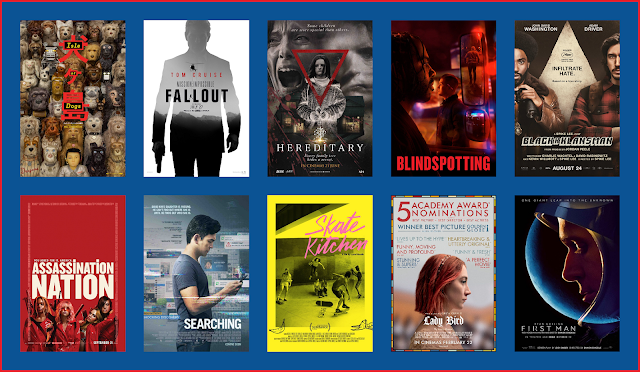Breaking the Rules: The Rise of John Wick (Part 2)
(A version of this article originally appeared on kernelnow.com / mynewslike.com)
 |
| Guns blazin' (source: Lionsgate) |
HEAVY SPOILERS FOR ALL THREE JOHN WICK FILMS FOLLOW BELOW
If you missed Part 1 then please check this out first!
On February 10, 2017, assassin supreme John Wick (Keanu Reeves) returned for John Wick: Chapter 2, displaying the same creative, unstoppable efficiency that was his trademark. Moreover, the whole bloody affair was presented in the same measured and polished manner as the original 2014 hit.
Acclaim for this consistent design lies with the film-makers and their continuous presence behind the lens. Early in the production of John Wick, Reeves contacted Chad Stahelski and David Leitch, stunt performers/choreographers with whom he had worked with at various points in The Matrix trilogy. His reason for bringing them in was to bring the balletic action sequences to life, although he later told The Hollywood Reporter he was “secretly hoping that they’d want to direct it”.
Of course, that’s exactly what they did; three films later Stahelski continues as director whilst Leitch remains as an executive producer. Their pre-existing familiarity with Reeves and symphonic combat became a familiarity with the world and audience of John Wick, spawning action sequences that remain cohesive and arresting across all three pictures.
 |
| From left-to-right: Stahelski, Reeves and Leitch on set (source: Lionsgate) |
For the franchise’s inimitable kinetic camerawork, Stahelski told GQ “We had no money .. The long takes, the close-quarters gun stuff—yes, those were ideas we had. But we couldn’t afford not to do long takes .. we only had one camera.” In a rare piece of fortune, a budgetary constraint bore fruit as a fresh artistic vision.
Reminiscent of the deliberate composition of Italian auteur Sergio Leone yet able to switch to the graphic, fast-paced Asian martial action style that Reeves has long admired, John Wick and its followup were able to marry a number of influences into an unforgettable world of modern gunslingers. Setting them in urban, metropolitan locations such as New York and the global ‘The Continental’ hotels was the final component needed to attain the films’ elegant, florescent color palette.
Inevitably for a film whose star’s every move has been made into a meme, John Wick – or rather, the idea of “pulling a John Wick” – soon became a cultural sensation. This notion quickly spread unto many films that followed – money talks in Hollywood, after all, and when there is box office success, imitation unavoidable. The most prominent example was Atomic Blonde, described by The Verge as showing star Charlize Theron “going full John Wick”. A shared visual style was perhaps inescapable, being that both films were directed by David Leitch; however, the film’s success ($100 million gross against a $30 million budget) proved audience appetite for the John Wick aesthetic.
 |
| Blue is the coolest color: Charlize Theron’s Atomic Blonde indulges in the John Wick shine (source: Focus Features) |
A third instalment seemed certain even before Chapter 2’s nine-figure return. Nonetheless, $171.5 million and two years later, John Wick: Chapter 3 – Parabellum made its worldwide debut in May 2019. Script-writer Derek Kolstad returned for a third time (now assisted by Shay Hatten, Marc Abrams and Sons of Anarchy’s Chris Collins), and the importance of his steady hand cannot be overstated. Whilst simple in motive, his scripts have transplanted Keanu Reeves’ natural mystique to the John Wick character, simultaneously creating an unknowable yet believable realm of hit contract syndicates just beyond “the real world”. It is difficult to imagine the John Wick series succeeding without his continued participation, and the loyalty placed in him and director Stahelski by Summit Entertainment and Lionsgate Pictures is a rarity in the modern blockbuster world.
Joining the cast this time around was Halle Berry, who apparently insisted on a role even before there was a script in place; the belief surrounding John Wick was now extending beyond audiences to potential stars. Berry’s drop-off from late-90s megastar to side-lined icon also mirrored that of Keanu Reeves, and doubtlessly she and many others saw the benefits of this series that Ian McShane, Willem Dafoe and more had so far enjoyed.
 |
| “Just a conversation” is what it took for Halle Berry (Sofia) to signal her interest in the series (source: Lionsgate) |
Arguably most satisfying of all these enchanced roles was that of franchise mainstay Charon (Lance Reddick) who was given action aplenty as he assists “Mr. Wick” in defending The Continental - no longer just the well-spoken concierge/sidekick that he and so many persons of colour had been relegated to occupy previously. In all of these characters and their players there exist not just heroes ready to represent minorities, but also equals presented for acceptance by the mainstream audience.
 |
| The multi-talented and diverse main cast members from John Wick: Capter 3 – Parabellum (source: Lionsgate) |



Comments
Post a Comment